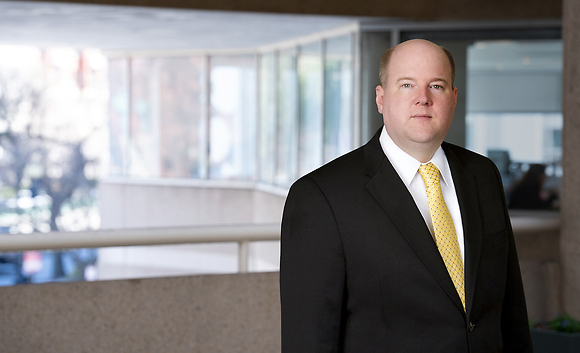Ex-NFL Player's Future Concussion Settlement Payments are Protected from Creditors in Bankruptcy
Please visit this link to view the article on Lexology's website.
Last month, a federal district court affirmed a bankruptcy court’s ruling that an ex-NFL player’s potential future recovery from a concussion-related class action settlement agreement was shielded from the reach of creditors in the former player’s Chapter 7 bankruptcy proceeding. The ruling turned on the bankruptcy court’s finding that the potential future settlement payments were more akin to a disability benefit, which is exempt under Florida law, than a standard tort settlement, which is not.
Background
Former NFL safety Darryl E. Williams played professional football in the NFL for nearly a decade, from 1992-2001.[1] In 2015, the NFL settled a class action suit with its current and former players relating to their claims against the NFL for failure to warn against the long-term health problems associated with concussions and the effects of traumatic brain injuries (the “NFL Settlement”).[2] The settlement agreement is an uncapped deal that allows players to individually pursue monetary awards for qualifying diagnoses of specified neurological conditions arising from their time playing in the NFL.[3] The settlement agreement provides that the relevant class includes “all Retired NFL Football Players,” which would include Mr. Williams.[4]
In 2016, Mr. Williams filed for Chapter 7 relief in the Bankruptcy Court for the Southern District of Florida. On his amended Schedule C—which lists property a debtor claims as exempt and thus beyond the reach of creditors—Mr. Williams included potential payments from the NFL Settlement.[5] The U.S. Trustee (the “Trustee”) filed an objection to the exemption, and asserted that any such payments would constitute tort settlement payments and thus not qualify for exemption under Florida law.[6] Notably, at the time of Mr. Williams’ bankruptcy petition, he had not yet received any payments from the NFL Settlement but would become eligible in the future if he were to be diagnosed with a qualifying medical condition.[7]
The Bankruptcy Court’s Decision
The Bankruptcy Court overruled the Trustee’s objection after finding that Mr. Williams’ potential future benefits from the settlement were more like proceeds from an employee medical benefit policy than a tort settlement, and, for that reason, qualified for the exemption under Florida law.
After summarizing in significant detail the relevant terms of the NFL Settlement, the Bankruptcy Court turned to 11 U.S.C. § 522(d), which governs federal bankruptcy exemptions, and Florida law. The Bankruptcy Court explained that while Florida has “generally opted out” of the federal exemptions enumerated in Section 522(d), Florida law provides an “exception to that general rule, whereby debtors may claim exemptions under Section 522(d)(10),” which includes the debtor’s right to receive “a disability benefit, illness, or unemployment benefit.”[8] Thus, for the exemption to apply, the court would need to conclude that any proceeds paid to Mr. Williams pursuant to the NFL Settlement constituted a “disability benefit.”[9]
The Trustee argued that settlement proceeds did not qualify as such. Acknowledging that the issue was one of first impression, the Trustee relied upon Chesley v. Woodard, to support its contention that the exemption did not apply. In Chesley, the District Court for the Middle District of Florida analyzed whether proceeds from a “tort claim settlement” qualified for exemption under this section and concluded that for the exemption to apply, it must be established that the “(1) the proceeds are disability income benefits and (2) the[ ] benefits are under a policy.”[10] The Trustee argued that Mr. Williams’ future payments were nonexempt because the NFL Settlement was not a policy, but rather it was “simply resolving a tort claim, for which there are no exemptions under applicable Florida Law.”[11]
In conclusion, the Bankruptcy Court found that the agreement “created a new and separate disability policy through which injured parties are able to receive disability benefits” and that this new policy fell squarely within the meaning of the “disability benefit” exemption.[12]
The Trustee appealed.
The District Court’s Decision
On appeal, the Trustee argued that (1) any benefits received under the NFL Settlement constituted “tort recoveries” rather than “disability benefits” and (2) even if the NFL Settlement constituted a “disability policy,” the Bankruptcy Court should have found the exemption was pursuant to Section 522(d)(1)(E) rather than (C), which may be “substantially less” than the exemption allowed under subsection (C).[13]
The District Court rejected the Trustee’s arguments. The District Court agreed that whether the NFL Settlement payments constitute exempt assets under Section 522(d)(10) was an issue of first impression.[14] In analyzing the issue, it also considered the applicability of Chesley v. Woodard, which the Trustee relied upon both below and on appeal.[15] The District Court, like the Bankruptcy Court below, rejected its applicability, explaining that the case was “not determinative, or even persuasive, precedent” for deciding the case at hand, primarily because it addressed an “entirely separate exemption provision under Florida law.”[16] It explained that the provision at issue in Chesley was “clearly more narrow than the provision at issue [in Williams],” which “exempts, broadly and without qualification, a debtor’s right to receive ‘a disability, illness, or unemployment benefit.’”[17]
The District Court also pointed to an important factual distinction between the two cases: Chesley involved a debtor who had been injured in a car crash and sought to exempt the proceeds from a tort settlement agreement, whereas the NFL Settlement involved a “unique, employer-employee relationship.” The District Court quoted at length from the Bankruptcy Court’s discussion of the unique features of the NFL Settlement, which provides for individualized review, evaluation, and payment, and agreed with its characterization of the agreement as “vastly different from a traditional class action tort claim settlement.”
The District Court also found instructive two other cases from outside the Eleventh Circuit, which, in its view, supported the proposition that the underlying legal claim or form of settlement is not determinative of whether the exemption is properly claimed.[18] Specifically, the District Court explained that the “legal theory” supporting payment—here, a class action—was not dispositive, because “the real issue is whether ‘his recovery actually represents a disability payment’ or benefit under the statute.”[19] And that it “does not matter that the ‘disability benefit’ arose from litigation.”[20] It found that “[d]espite the fact that the NFL Settlement payments are a product of litigation and a carefully brokered agreement, the character of the payments is at heart a disability benefit,”[21] and exemption was, therefore, appropriate under Section 522(d)(10)(C).
Finally, the District Court stated that because it agreed with the Bankruptcy Court’s ruling that the payments were exempt under subsection (C), it also need not analyze whether exemption was appropriate under subsection (E), and refused the Trustee’s request to remand the case for additional findings on that question.[22]
Kevin C. Maclay and Todd E. Phillips are Members of Caplin & Drysdale’s Bankruptcy and Complex Litigation practice groups. Sally J. Sullivan is an Associate in both groups.
[1] See Order Overruling Chapter 7 Trustee’s Objection to Claim of Exemption in National Football League Player’s Concussion Injury Litigation Settlement at 3 n.1, In re Darryl Edwin Williams, No. 16-16621 (Bankr. S.D. Fla. June 27, 2018) (the “Bankr. Order”); Pro Football Reference, Darryl Williams, https://www.pro-football-reference.com/players/W/WillDa03.htm (last visited Apr. 24, 2019).
[2] Bankr. Order at 3.
[3] Id.
[4] Id. at 3 n.1.
[5] Id. at 2-3.
[6] Id. at 1, 6.
[7] Id. at 4-5.
[8] Bankr. Order at 5.
[9] Since the Bankruptcy Court concluded that the NFL Settlement provided disability benefits that were exempt under subsection (C), it did not go on to assess whether the benefits were exempt under the other potentially applicable subsection (E), which permits a debtor to exempt “a payment under a stock bonus, pension, profit sharing, annuity, or similar plan or contract on account of illness, disability, death, age, or length of service, to the extent reasonably necessary for the support of the debtor and any dependent of the debtor.” Id. at 5.
[10] Id. at 6. See also Chesley v. Woodard, 526 B.R. 888 (M.D. Fla. 2014).
[11] Id.
[12] Bankr. Order at 9.
[13] Order, Salkin v. Darryl Edwin Williams at 2, 14, No. 18-cv-61581 (S.D. Fla. Mar. 26, 2019) (the “District Court Order”). See also supra note 9 discussing Section 522(d)(10)(E).
[14] District Court Order at 7.
[15] Id.
[16] Id. at 7-8 (quoting the Florida statute at issue in Chesley which states that: “disability income benefits under any policy or contract of life, health, accident, or other insurance of whatever form, shall not in any case be liable to attachment, garnishment, or legal process in the state, in favor of any creditor or creditors of the recipient of such disability income benefits, unless such policy or contract of insurance was effected for the benefit of such creditor or creditors.” Fla. Stat. § 222.18).
[17] Id. at 8.
[18] District Court Order at 11-14.
[19] Id. at 12.
[20] Id. at 13-14.
[21] Id. at 14.
[22] Id.

